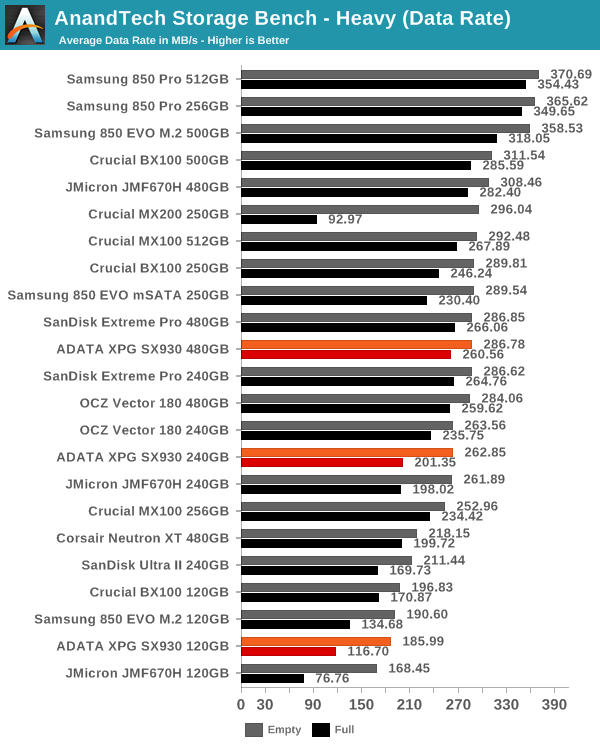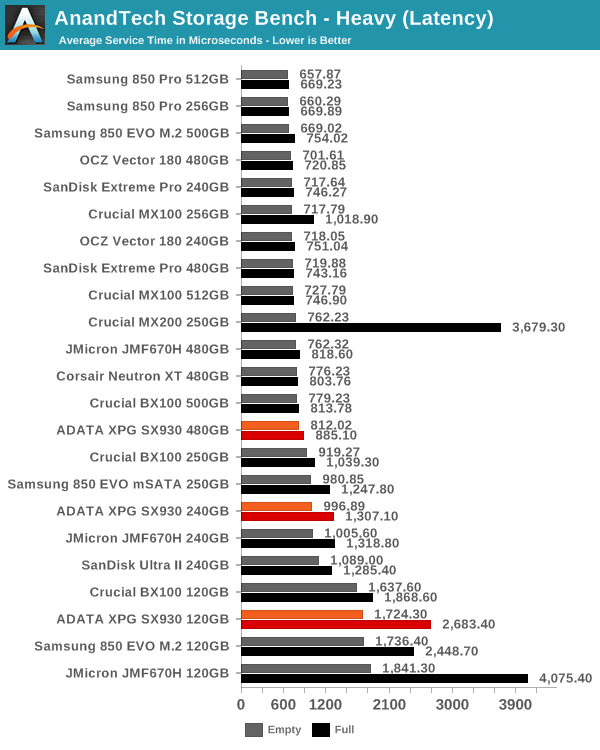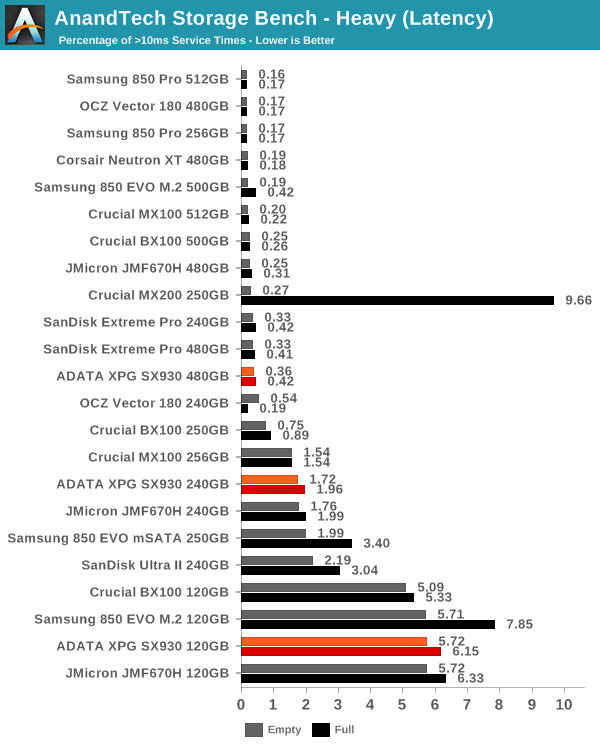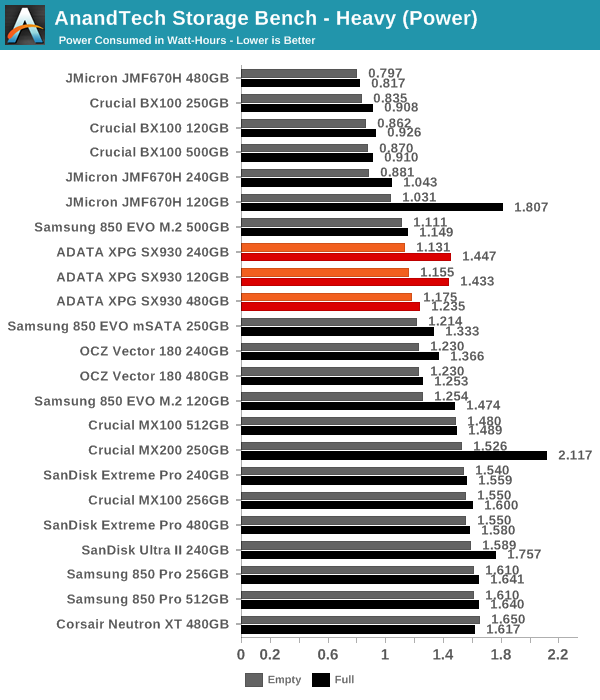ADATA XPG SX930 (120GB, 240GB & 480GB) SSD Review: JMicron JMF670H Debuts
by Kristian Vättö on July 16, 2015 10:00 AM ESTAnandTech Storage Bench - Heavy
While The Destroyer focuses on sustained and worst-case performance by hammering the drive with nearly 1TB worth of writes, the Heavy trace provides a more typical enthusiast and power user workload. By writing less to the drive, the Heavy trace doesn't drive the SSD into steady-state and thus the trace gives us a good idea of peak performance combined with some basic garbage collection routines. For full details of the test, please refer to the this article.

In our Heavy trace the SX930 is an average performer. To be frank, the JMF670H doesn't seem to have enough juice to go head to head with the 850 EVO and BX100, which is a shame because it leaves price as the only competitive advantage ADATA can have.

Surprisingly the 240GB model experiences more >10ms IOs in our Heavy trace than in The Destroyer. I would speculate this is due to the SLC cache filling up because the Heavy trace is more peak IO focused, whereas The Destroyer is built more for sustained performance, so it may be that in The Destroyer the controller just bypasses the SLC cache at some point and writes directly to MLC. In any case, optimizations are certainly needed to improve performance.

Power consumption, on the other hand, is relatively good. It's not BX100-level, but compared to some other high-end SSDs the SX930 has a more efficient power profile.











67 Comments
View All Comments
sonny73n - Sunday, July 19, 2015 - link
Oh really? Was it another firmware update for the 840EVO? When? I just threw my 840EVO out about 5 days ago after 2 firmware updates this year which did not fix the problem. The last update I had, Samsung had some kind of optimization in "Magician" (lmao) by moving all the old data to new blocks. Yeah ok, I had that 250GB EVO filled with about 190GB. It took like forever to finish and the optimization had to be run frequently in order to keep the 840EVO runs near advertised specs."Vitriol" or whatever, I would take any SSD with JMicron controller over the 840EVO in a heart beat. At least I wouldn't feel like being cheated out of paying for something that it's clearly NOT!
I'm thinking anyone that purchased the 840EVO should get together and file a class action lawsuit on Samsung for faulty advertising, consumer fraud or something like that.
voicequal - Monday, July 20, 2015 - link
Can you get a replacement under warranty?Oxford Guy - Sunday, July 19, 2015 - link
"Samsung has made 1 slip-up that was fixed with a firmware update."False. The 840 and 840 EVO drives reportedly have a permanent TLC-caused flaw. The only thing Samsung has managed to do, last I heard (and that was two "fixed" later) is re-write the data over and over again to paper over the problem.
The TLC is too weak to avoid voltage degradation so data needs to be rewritten to prevent massive slowdowns in read speed. I don't think Apple has ever bothered to release anything to fix the Samsung OEM drives they put their brand on either.
Oxford Guy - Sunday, July 19, 2015 - link
Interestingly, too, Apple decided to dump TLC, at least for its mobile line, sometime ago -- citing the inherent flaws. One could look at that move as being part of their feud with Samsung but I doubt that was the main motivation.zodiacfml - Sunday, July 19, 2015 - link
that's what truly happened. it only worked good when it was new.jabber - Monday, July 20, 2015 - link
Running SATA II? Buy the cheapest Kingston V300 as it will push 275MBps all day long.Running SATA III? Buy a BX100 and be done with it.
Saiyan32 - Sunday, November 27, 2016 - link
the firmware update really did the trick .. it has improved by a lot... I request anandtech to another review on this....